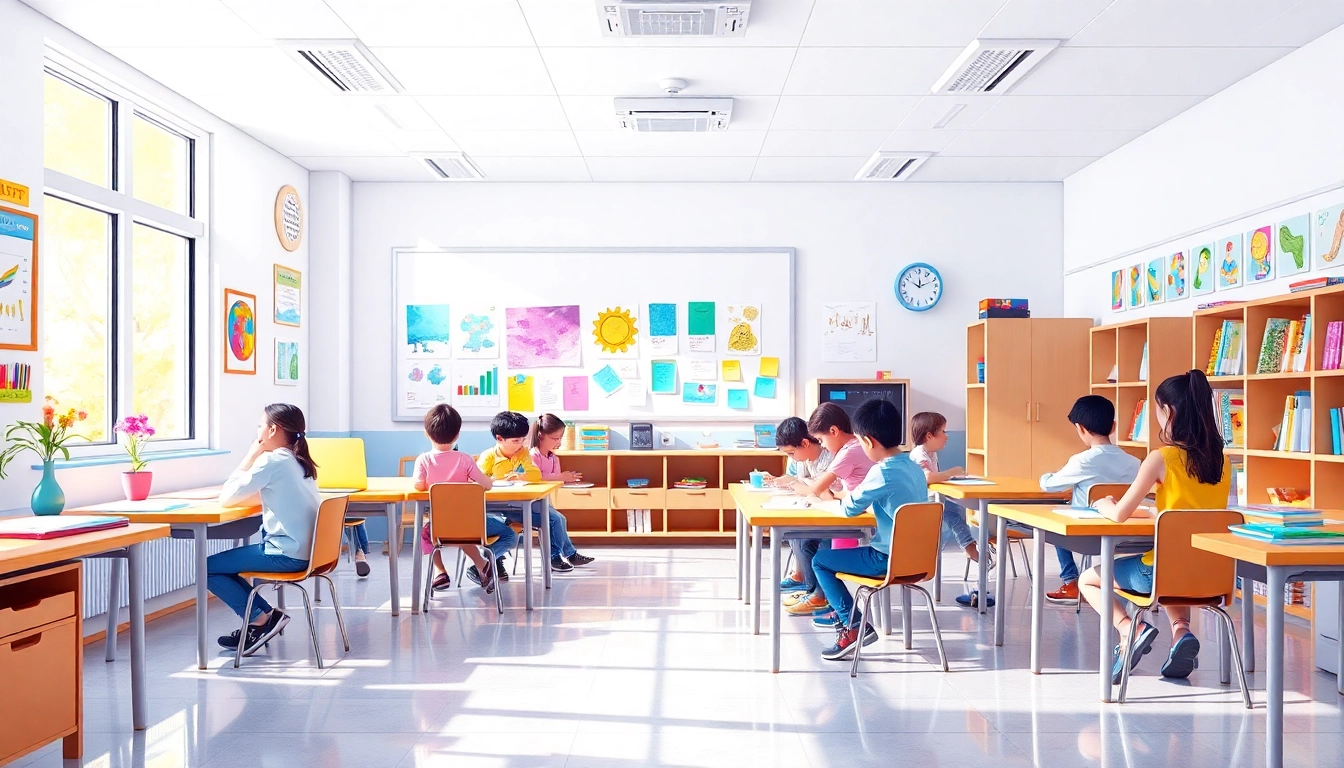Understanding the Core Philosophy of My Color School
In the realm of early childhood education, the importance of integrating color effectively into curricula has gained increasing recognition. Visual stimuli profoundly impact a child’s cognitive and emotional development, making color not just a decorative element but a vital pedagogical tool. My Color School embodies this philosophy, emphasizing color’s role in fostering creativity, engagement, and inclusive learning environments. Their approach is rooted in developmental psychology principles, advocating for intentional color usage that supports diverse learning styles and developmental stages.
The Importance of Color in Early Education
Color influences a child’s ability to focus, retain information, and express themselves. Research demonstrates that classroom colors can affect mood, behavior, and even academic performance. For instance, blue hues tend to promote calmness and concentration, while warmer tones like orange and yellow can energize students and stimulate creativity. Recognizing these effects, My Color School advocates for strategic color use that aligns with educational objectives, thereby creating environments conducive to optimal learning experiences.
Foundational Principles Behind My Color School Curriculum
At its core, the curriculum designed by My Color School centers on the integration of color theory with practical pedagogical strategies. It champions the idea that understanding colors beyond their aesthetic appeal can unlock new avenues for engagement and development. Key principles include:
- Color-Emotion Linkage: Utilizing colors to evoke specific emotional responses that support learning.
- Cultural Inclusivity: Incorporating diverse cultural color associations to foster inclusiveness.
- Developmentally Appropriate Use: Tailoring color schemes to suit different age groups and learning stages.
- Environmental Harmony: Designing spaces that balance colors for visual comfort and stimulation.
How Colors Influence Learning and Development
The psychology of color provides insights into how hues can enhance or hinder various aspects of a child’s development. For example:
- Attention and Focus: Cool colors like blue and green are associated with calmness and improved concentration.
- Creativity: Bright and warm colors such as yellow and orange stimulate imagination and innovation.
- Emotional Regulation: Soft pastels can soothe anxious children, fostering a sense of safety.
- Behavioral Outcomes: Color-coded systems, supported by research, can improve classroom management and student self-regulation.
Implementing these principles, My Color School encourages educators to thoughtfully incorporate color into every facet of the learning environment, from curriculum design to classroom decor.
Implementing Color-Based Learning Strategies
Interactive Activities and Projects for Classroom Success
Active engagement is a cornerstone of effective learning, and utilizing color can significantly boost participation. Teachers can design thematic color explorations, such as:
- Color Scavenger Hunts: Students find objects based on color clues, reinforcing vocabulary and observation skills.
- Color Mixing Experiments: Hands-on activities with primary colors foster understanding of color theory and science concepts.
- Artwork with Thematic Colors: Projects centered on specific color schemes allow students to express emotions and stories visually.
- Cultural Color Studies: Exploring color symbolism across cultures to promote inclusiveness and cultural awareness.
Utilizing Color Theory to Enhance Creativity
A foundational knowledge of color theory—covering concepts such as complementary, analogous, and monochromatic schemes—empowers students to create harmonious compositions. Educators can integrate these principles through:
- Digital Design Projects: Using software tools like Coolors or Adobe Color to craft palettes for stories or designs.
- Storytelling with Colors: Assigning color themes to narratives to evoke mood and setting.
- Nature-Inspired Color Studies: Observing natural phenomena to understand how colors work together in real life.
Tech Tools and Resources for Visual Learners
Technology integration is vital for supporting visual learners. Resources such as Coolors enable students and teachers to generate and experiment with color palettes effortlessly. Augmenting traditional lessons with digital tools facilitates:
- Interactive color matching games
- Virtual art studios with dynamic color tools
- Gamified learning modules on color concepts
These innovations offer personalized, engaging experiences that align with diverse learning needs, making color education accessible and exciting.
Designing a Color-Inclusive Environment
Decor and Classroom Setup Ideas with My Color School
Creating a vibrant and inclusive classroom environment involves more than selecting bright colors. It requires intentional design that considers spatial harmony and accessibility. Strategies include:
- Using color zones to delineate activity areas
- Incorporating color-coded storage and learning centers for organization
- Employing neutral backgrounds with accent colors to prevent overstimulation
- Including diverse cultural color motifs to promote inclusiveness
Color Coding and Behavior Management Techniques
Color coding can be a powerful behavioral management tool. Many schools implement color systems to communicate expectations and reinforce positive behaviors, such as:
- Yellow for caution or warnings—prompting self-awareness
- Orange for moderate consequences—such as time-outs or peer mediation
- Red for serious issues—requiring administrator intervention
This approach is aligned with Positive Behavioral Interventions and Supports (PBIS) strategies, which leverage color cues to promote self-regulation and ordered behavior.
Adapting Color Strategies for Diverse Learners
Equitability in color use involves understanding sensory sensitivities, cultural differences, and individual preferences. For example, some students may be sensitive to bright or flashing colors, requiring softer tones or adjustments in lighting. Teachers should involve students and families in selecting color schemes to foster ownership and respect cultural nuances, ensuring that every learner benefits from a thoughtfully curated environment.
Measuring Impact and Progress with Color Education
Assessing Student Engagement and Creativity
Quantitative and qualitative methods can track how color-based strategies influence student outcomes. Metrics include:
- Observation checklists noting focus during activities
- Student reflection journals on emotional responses to color changes
- Submission of creative projects using learned color theories
Student Feedback and Case Studies
Collecting feedback through surveys and interviews helps tailor interventions. For example, a case study at a primary school implementing color zones observed increased on-task behavior, improved mood, and heightened creativity among students. Documenting such outcomes offers evidence for expanding color-focused curricula.
Long-Term Benefits of a Color-Centric Curriculum
Over time, students develop a deeper understanding of perceptual and emotional influences of color, enhancing their artistic, scientific, and social-emotional skills. A sustained focus on color fosters resilience, cultural awareness, and adaptability—critical qualities for future success.
Future Trends and Innovations in Color Education
Emerging Technologies and Approaches
Advances such as augmented reality (AR) and virtual reality (VR) are opening new horizons for immersive color education. Imagine students virtually exploring color spectra in 3D spaces or manipulating color environments in real time, making abstract concepts tangible. AI-powered analytics can personalize color learning pathways based on individual progress and preferences.
Partnerships and Community Involvement
Collaborations with local artists, cultural institutions, and technology developers can enrich programs, fostering community-based projects like mural paintings or color-themed festivals. These initiatives promote real-world applications and community engagement, essential for holistic education.
Expanding My Color School Program Accessibility
To reach underserved communities, My Color School emphasizes digital literacy and resource availability. Developing multilingual materials, subsidized kits, and mobile-friendly platforms ensures equitable access. Advocacy for policy changes supporting inclusive color education also plays a crucial role.



















